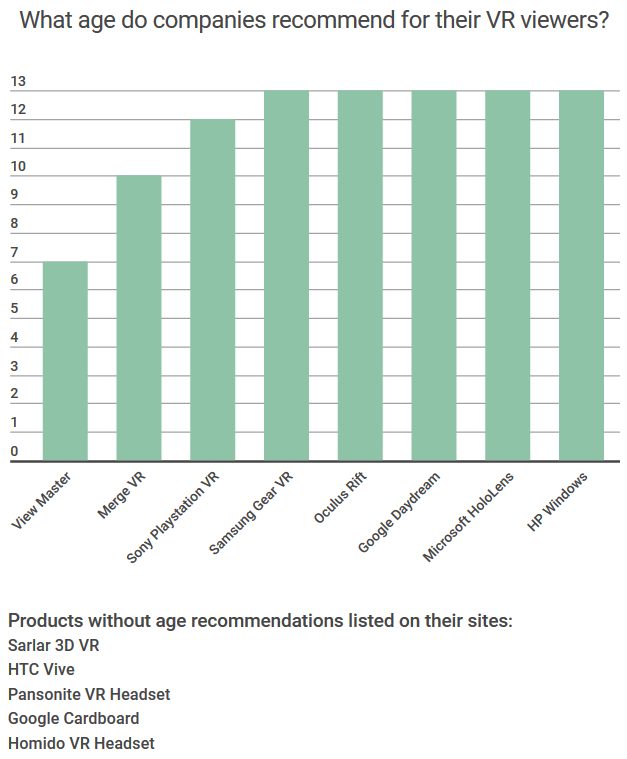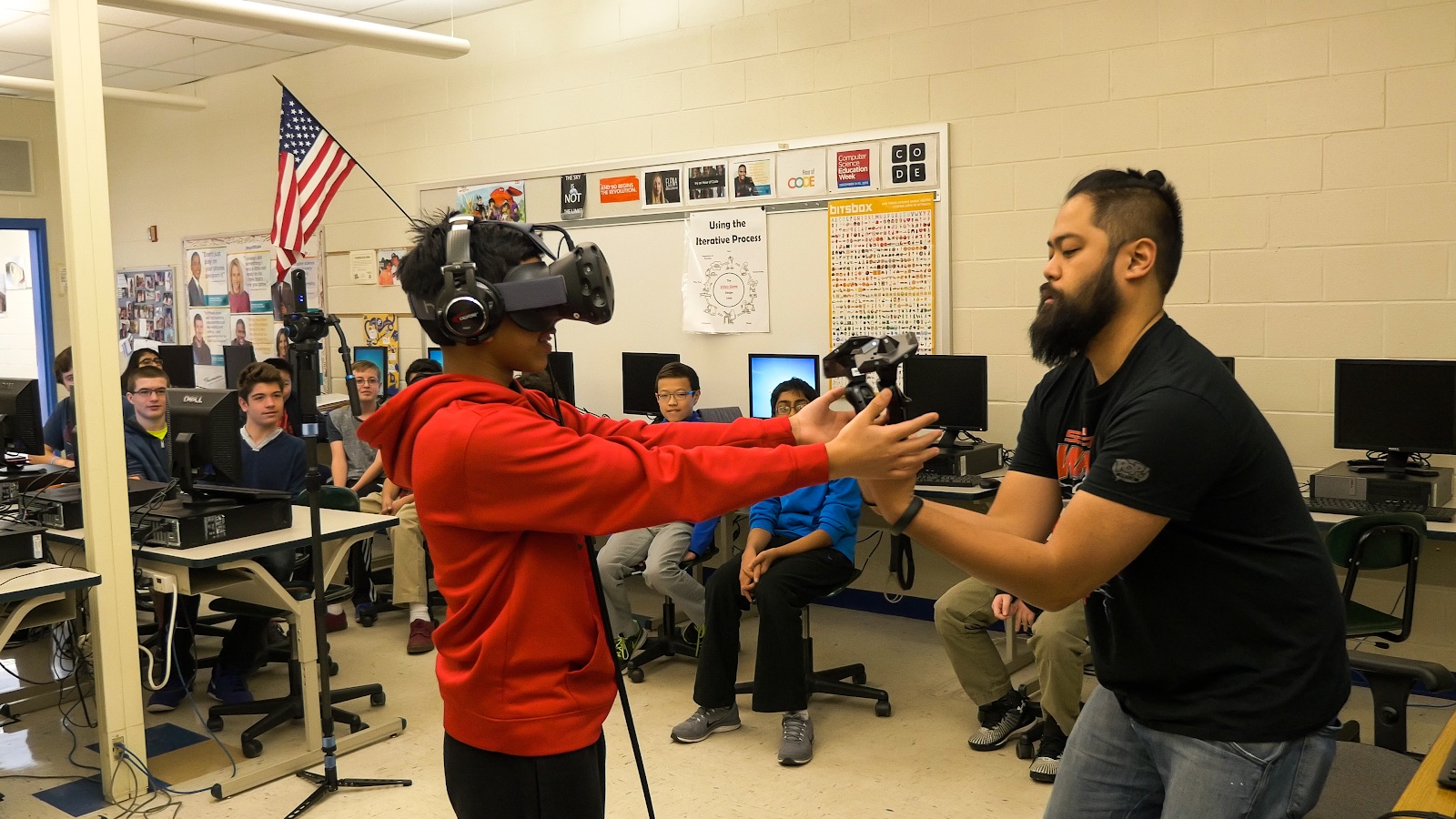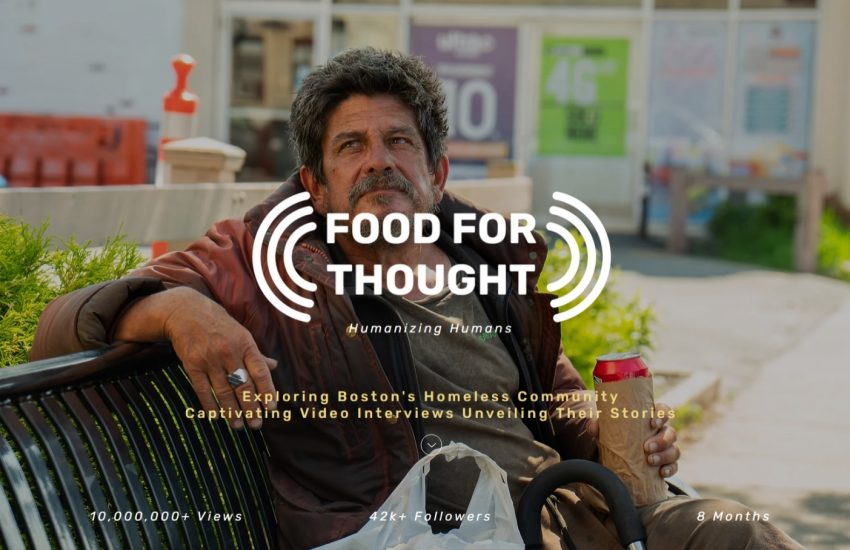Despite the growing educational uses for virtual reality, research into its potential problems is lacking
From experiencing swimming underwater with a Blue Whale, to feeling what it is like to live in solitary confinement or reliving the horrors of 9/11, virtual reality is changing the way educators can connect and educate their students.
“There are many potential benefits that we have noticed,” said Tom Swanson of Foundry10, a philanthropic educational research organization based in Seattle. “Being able to give additional context to historical events, more opportunities to discuss differing perspectives in the subject matter, giving things a sense of scale for more visual-based classrooms, engaging more interactively with learning concepts, and taking a different approach to artistic creation are all directions teachers are going with this technology.”
Foundry10 is focused on student and teacher creativity, as well as expanding the ways people think about learning–trying to do as many good things they can that directly benefits children.
With the growing popularity and potential benefits of virtual reality, especially in the classroom, there are also ethical considerations when introducing children to VR. These potential ethical issues and drawbacks include anxiety, false memories in young children as well as physical and physiological side effects.
“It is imperative to consider that VR may have long lasting impacts on youth, so easing into it is important,” Tom Swanson said. “We do not know impacts VR may have, and it is important to find the balance between being mindful of those effects, and the benefit VR can bring to youth all over the world.”
However, many companies such as Foundry10 are moving forward with using virtual reality as an education tool for children. And they’re reaching a lot of kids. Since 2016, Foundry10 has worked with 2,445 students from 6th-12th grade.

“The biggest thing that we hear from students is that they want VR to remain exciting, engaging, and full of wonder, so finding ways to capture that feeling is really important for developers,” Swanson said.
Despite this growing popularity, virtual reality headset companies and developers are behind in creating age restrictions and rating systems for the technology. Most VR headsets do not have an age restriction in place, but of those that do, age 13+ is the most common age restriction on these headsets.
An Oculus Rift health and safety document states, “This product should not be used by children under the age of 13, as the headset is not sized for children and improper sizing can lead to discomfort or health effects, and younger children are in a critical period in visual development.”
Oculus CEO Brendan Iribe explained another reason for the age threshold before the consumer launch of the Oculus Rift head-mounted display.
“The age of 13 was something that made a lot of sense when we became a part of Facebook, their age is 13 as well. And so we just felt like, ‘Let’s start at 13, let’s evolve the technology more, let’s build more confidence, in the health and safety side of it,’” Iribe said at the Code Conference in 2015. “And eventually, one day, we definitely want to have Oculus for kids, especially for all the educational use of this.”
Other hardware companies leave out age altogether. The lightweight, entry-level viewer Google Cardboard does not list a recommended age, but warns, “Cardboard is not for use by children without adult supervision.” The HTC Vive also does not have an age restriction, though its safety and regulatory guide states, “The product was not designed to be used by children.”
The current scarcity of studies on children using VR so far hampers doctors and researchers from making concrete recommendations. The first code of ethics for VR research and consumer use, written by philosophers Michael Madary and Thomas Metzinger in 2016, gained widespread media attention, but lacks specific recommendations for children–making Foundry10’s research all the more necessary.
“I’m very skeptical that VR presents some totally new novel ethical challenges,” said John Basl, a professor of philosophy and an expert in ethics of emerging technologies at Northeastern. “I think it raises the same ethical challenges that other technologies you might use in the classroom, like social media or gamifying.”
One problem rampant in social media that may also occur in virtual reality environments is the online bullying often enabled from anonymity.
“So it’s going to be important for teachers to be aware of these things in their classrooms and their effects,” he continued.
“Children are extremely insightful about how new tech can be used in the classroom,” Swanson said. “And it is important that we continue to listen to their expertise when thinking about that subject.”





